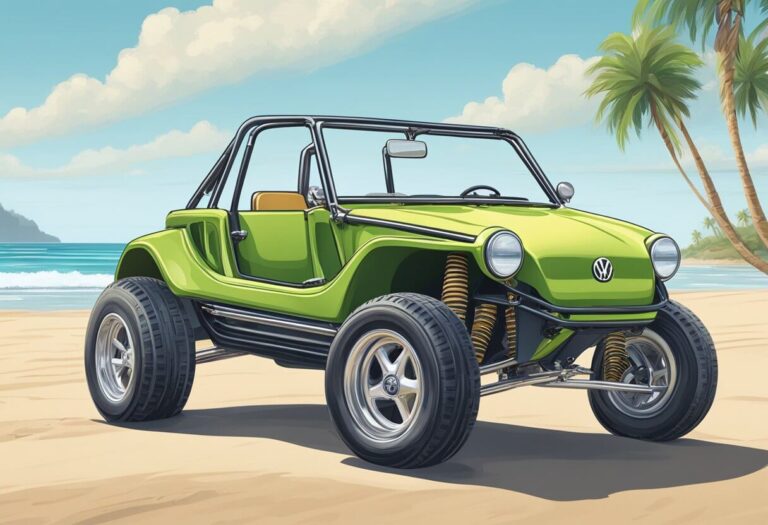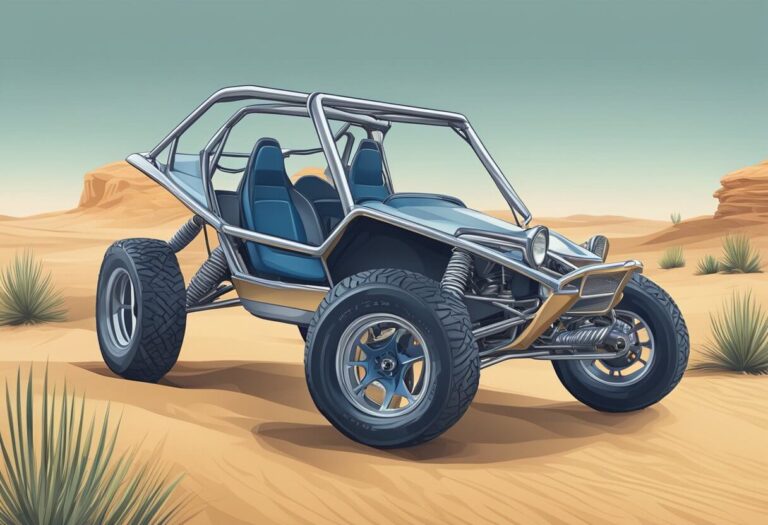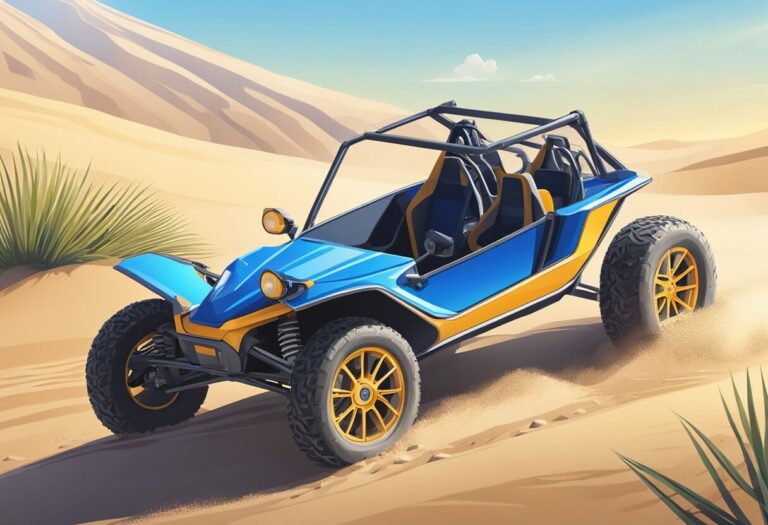2 Seater Dune Buggy Frame: A Comprehensive Guide to Building Your Own
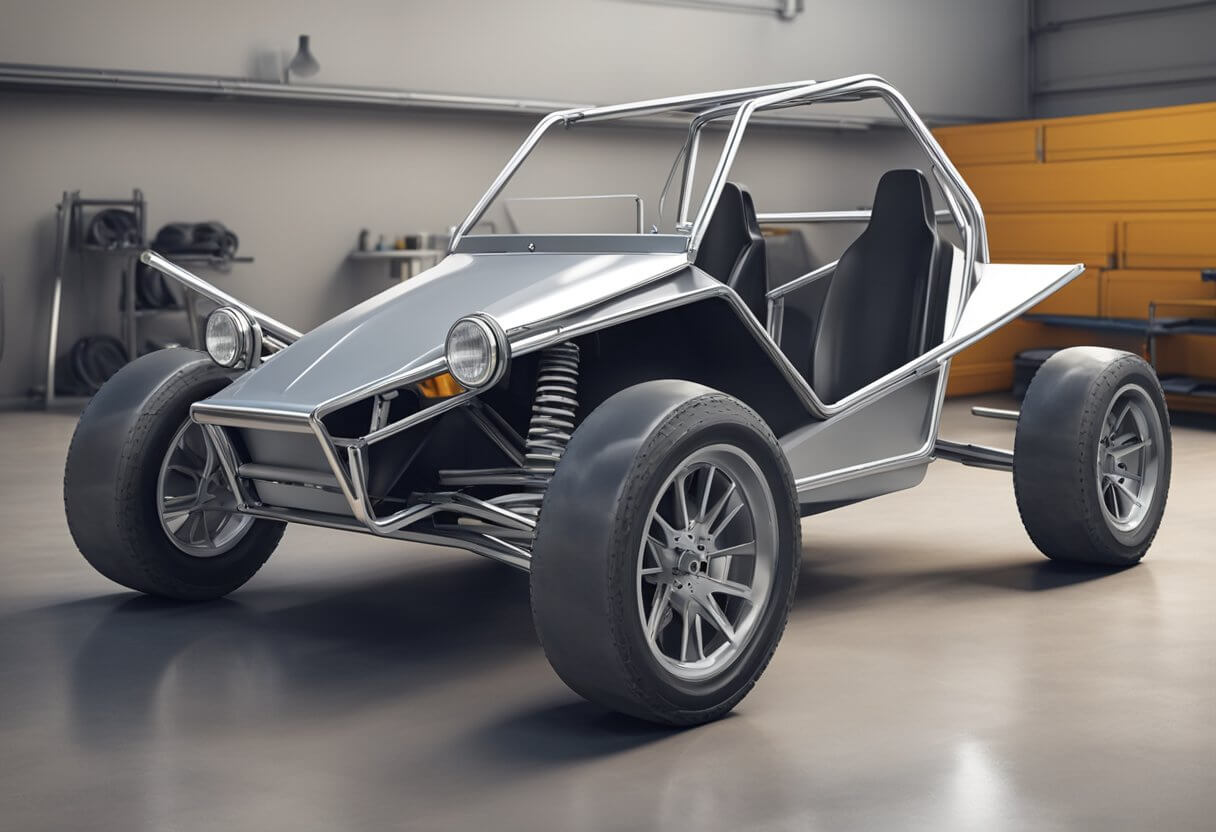
A 2-seater dune buggy frame is a popular choice for off-road enthusiasts who want to experience the thrill of driving on sand. The frame is designed to provide a safe and comfortable ride for two people, with features such as sturdy construction, suspension system, and powertrain integration. The frame is also highly customizable, allowing for a wide range of modifications to suit individual preferences.
Design principles are essential when building a 2-seater dune buggy frame. The frame must be strong and durable to withstand the rigors of off-road driving, while also being lightweight for optimal performance. The suspension system is another critical component, providing stability and control over rough terrain. Powertrain integration is also a crucial consideration, ensuring that the frame can handle the power and torque of the engine.
Overall, a 2-seater dune buggy frame is an excellent choice for anyone looking to experience the thrill of off-road driving. With its sturdy construction, suspension system, and powertrain integration, it provides a safe and comfortable ride for two people. Additionally, its high level of customization allows for a wide range of modifications to suit individual preferences.
Key Takeaways
- A 2-seater dune buggy frame must be designed with strong and durable construction, a reliable suspension system, and powertrain integration.
- The frame is highly customizable, allowing for a wide range of modifications to suit individual preferences.
- A 2-seater dune buggy frame is an excellent choice for anyone looking to experience the thrill of off-road driving.
Design Principles
Material Selection
When it comes to building a 2-seater dune buggy frame, the material selection is critical to ensure the frame is strong and durable enough to withstand the rough terrain. Common materials used for dune buggy frames include steel, aluminum, and chromoly. Steel is the most common material used, as it is affordable and easy to work with. Aluminum is lighter than steel, but it is more expensive. Chromoly is the strongest and lightest of the three materials, but it is also the most expensive. Ultimately, the material selection should be based on the intended use of the dune buggy and the builder’s budget.
Weight Distribution
Weight distribution is another crucial design principle when building a 2-seater dune buggy frame. The weight should be evenly distributed between the front and rear wheels to ensure optimal handling and stability. The front wheels should have enough weight to maintain traction, while the rear wheels should have enough weight to prevent them from spinning out. The weight distribution can be achieved by placing the engine and other heavy components in the rear of the frame and the passengers in the front.
Safety Features
Safety should always be a top priority when building a 2-seater dune buggy frame. Some essential safety features include a roll cage, seat belts, and a fuel cell. The roll cage should be designed to protect the passengers in the event of a rollover. Seat belts should be installed to keep the passengers securely in their seats during rough terrain. A fuel cell should be used instead of a traditional fuel tank to prevent fuel leakage in the event of a crash. Additionally, the dune buggy should be equipped with proper lighting and reflectors to ensure visibility during night rides.
Frame Construction
When constructing a 2-seater dune buggy frame, there are several important factors to consider. Proper welding techniques, frame strengthening, and corrosion protection are all crucial for ensuring a safe and reliable vehicle.
Welding Techniques
Welding is a critical component of frame construction. It is important to use the appropriate welding technique for the specific materials being used. MIG welding is a popular choice for dune buggy frames due to its ability to create strong and durable welds. TIG welding is another option, but it requires more skill and experience.
Frame Strengthening
A 2-seater dune buggy frame must be strong enough to withstand the rigors of off-road driving. One way to strengthen the frame is to use thicker steel tubing. Another option is to add gussets or braces at stress points to distribute the load more evenly. Cross members can also be added to increase the rigidity of the frame.
Corrosion Protection
Dune buggies are often driven in harsh environments that can lead to corrosion. To protect the frame from rust and other forms of corrosion, it is important to use high-quality materials and coatings. Powder coating is a popular choice for its durability and resistance to corrosion.
Suspension System
Shock Absorbers
The shock absorbers play a vital role in the suspension system of a 2 seater dune buggy frame. They are responsible for dampening the impact of bumps and rough terrain, allowing for a smoother ride. It’s important to choose shock absorbers that are appropriate for the weight and intended use of the dune buggy.
Suspension Geometry
The suspension geometry is the arrangement of the various components of the suspension system. This includes the control arms, steering knuckles, and other parts that work together to provide stability and control. Proper suspension geometry is crucial for ensuring that the dune buggy handles well and remains stable at high speeds.
Wheel Alignment
Wheel alignment refers to the angle at which the wheels are positioned relative to the ground and to each other. Proper wheel alignment is important for ensuring that the dune buggy tracks straight and handles well. Improper alignment can cause uneven tire wear and poor handling. It’s important to have the wheel alignment checked regularly and adjusted as needed.
In summary, the suspension system of a 2 seater dune buggy frame is crucial for ensuring a smooth ride and stable handling. The shock absorbers, suspension geometry, and wheel alignment all play important roles in achieving this. It’s important to choose components that are appropriate for the weight and intended use of the dune buggy, and to have the system checked regularly for proper alignment and function.
Powertrain Integration
When it comes to integrating the powertrain into a 2 seater dune buggy frame, there are several key considerations to keep in mind. These include engine mounting, transmission fitment, and drive axle configuration.
Engine Mounting
The engine mounting is a critical component of any dune buggy frame. In order to ensure proper weight distribution and handling, it is important to mount the engine in a way that is both secure and well-balanced. This often involves using custom engine mounts that are specifically designed to fit the particular make and model of engine being used.
Transmission Fitment
Another important consideration when integrating the powertrain into a dune buggy frame is transmission fitment. The transmission must be properly aligned with the engine and mounted securely to the frame. This often requires custom fabrication work to ensure that the transmission fits snugly and securely in place.
Drive Axle Configuration
Finally, the drive axle configuration is another key consideration when integrating the powertrain into a dune buggy frame. The drive axle must be properly aligned and mounted to the frame, and the gearing must be chosen carefully to ensure that the buggy is able to handle the terrain it will be used on. This often involves custom fabrication work to ensure that the drive axle is properly configured for the specific make and model of buggy being built.
Seating and Ergonomics
Seat Mounting
The seating arrangement in a dune buggy is a crucial aspect of the overall design. A well-designed seat mounting system ensures that the driver and passenger are comfortable and safe while driving. The 2 seater dune buggy frame is designed with seat mounting in mind. The seats are mounted to the frame using high-quality materials and hardware, which ensures that they are secure and stable during operation.
Driver Comfort
The driver’s comfort is an essential factor in the design of a dune buggy. The 2 seater dune buggy frame is designed to provide maximum comfort to the driver. The seat is positioned at a comfortable height, which allows the driver to have a clear view of the road ahead. The seat is also designed to provide excellent support to the driver’s back, which reduces fatigue during long drives. The seat is adjustable, which allows the driver to adjust it to their preferred position.
Passenger Safety
Passenger safety is a top priority in the design of a dune buggy. The 2 seater dune buggy frame is designed to provide maximum safety to the passengers. The seat belts are securely mounted to the frame, which ensures that the passengers are safe in the event of an accident. The frame is also designed to provide excellent protection to the passengers in the event of a rollover. The seats are positioned in a way that provides maximum protection to the passengers while also ensuring that they have a clear view of the road ahead.
Customization Options
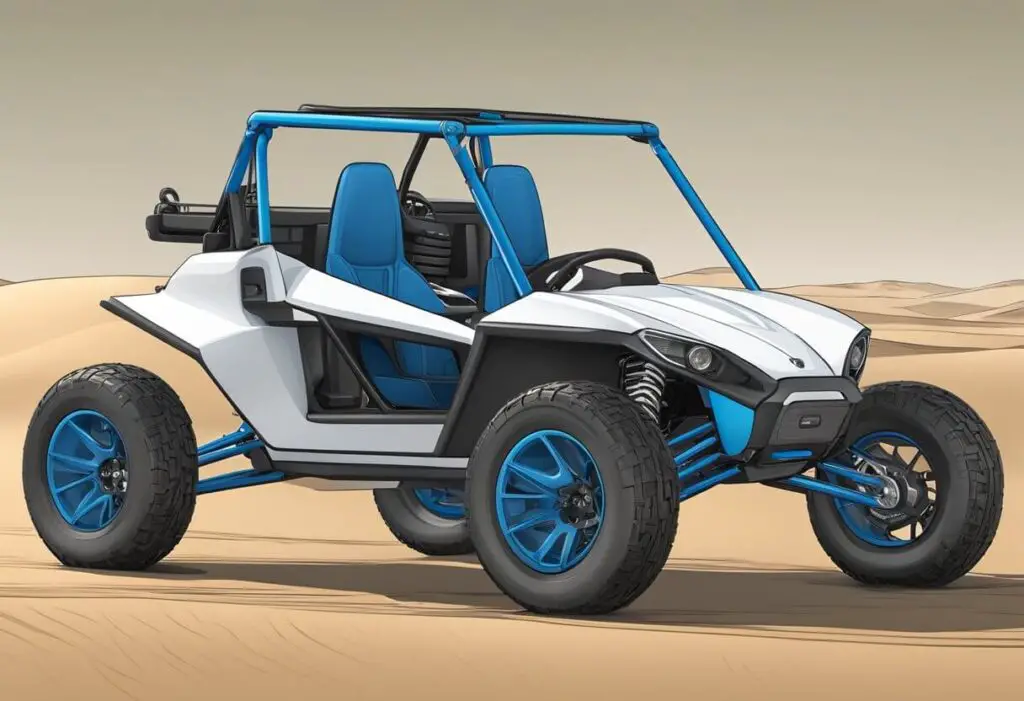
When it comes to customizing a 2-seater dune buggy frame, there are plenty of options available to suit the needs and preferences of every driver. Here are some of the most popular customization options:
Aesthetic Modifications
One of the most common ways to customize a dune buggy is through aesthetic modifications. This can include adding a custom paint job, decals, or graphics to the body of the buggy. Some drivers may also choose to add additional lighting or accessories to enhance the overall look of the vehicle.
Performance Upgrades
For those looking to improve the performance of their dune buggy, there are several upgrades that can be made. Upgrading the engine, suspension, or brakes can all have a significant impact on the handling and speed of the vehicle. Drivers may also choose to add specialized tires or wheels to improve traction on different terrains.
Accessory Integration
Finally, many drivers choose to integrate accessories into their dune buggy to improve functionality and convenience. This can include adding a sound system, GPS navigation, or even a winch for off-road recovery. Other popular accessories include storage solutions, such as roof racks or cargo boxes, to help carry gear and equipment on longer trips.
Regulatory Compliance
Street Legality
When it comes to dune buggies, street legality can be a bit of a gray area. While some states allow dune buggies to be registered and driven on public roads, others do not. It is important to check with your local DMV to determine whether or not your dune buggy is street legal.
Off-Road Regulations
If you plan on using your dune buggy off-road, there are still regulations that you need to be aware of. In most cases, off-road vehicles are required to have certain safety features such as roll cages and seat belts. Additionally, many off-road areas have specific rules and regulations that must be followed.
Environmental Considerations
Dune buggies can have a significant impact on the environment, particularly in sensitive areas such as sand dunes. It is important to be mindful of the impact your dune buggy may have and to follow all posted rules and regulations. Additionally, it is important to properly maintain your dune buggy to minimize its impact on the environment. This can include things like regularly checking for leaks and disposing of any waste properly.
Regulations differ based on location and dune buggy use. Research and follow all applicable laws and rules to operate your dune buggy safely and responsibly.
Maintenance and Upkeep
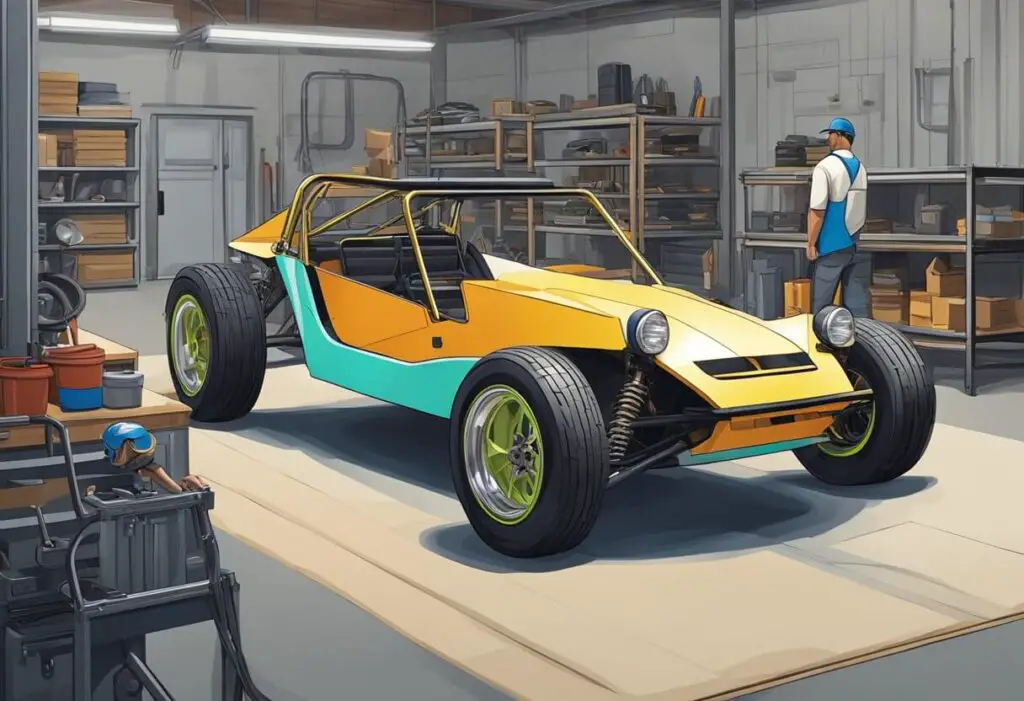
Routine Inspections
Regular inspections are essential to keep a 2 seater dune buggy frame in top condition. It is recommended to perform routine inspections before and after each ride. The following components should be inspected:
- Tires: Check the tire pressure and look for any signs of wear or damage.
- Suspension: Inspect the shocks and springs for any signs of damage or wear.
- Brakes: Check the brake pads for wear and make sure the brake lines are not damaged.
- Steering: Check the steering linkage and make sure there is no play in the system.
- Frame: Inspect the frame for any signs of damage or cracks.
Repair Procedures
If any damage or wear is detected during routine inspections, it is important to repair or replace the affected components as soon as possible. The following repair procedures should be followed:
- Tires: Replace any tires that are worn or damaged.
- Suspension: Replace any shocks or springs that show signs of damage or wear.
- Brakes: Replace any brake pads that are worn and repair or replace any damaged brake lines.
- Steering: Replace any worn or damaged steering components.
- Frame: Repair any cracks or damage to the frame as soon as possible.
Long-Term Storage
If the 2 seater dune buggy frame is going to be stored for an extended period, it is important to take the following steps:
- Clean the frame thoroughly and remove any dirt or debris.
- Apply a coat of rust inhibitor to the frame to prevent rust and corrosion.
- Cover the frame with a protective cover to keep it clean and dry.
- Store the frame in a dry, cool place away from direct sunlight.
By following these maintenance and upkeep procedures, a 2 seater dune buggy frame can provide years of reliable service.
Market Considerations
Target Demographics
When considering the market for 2-seater dune buggy frames, it is important to understand the target demographics. Typically, these vehicles are popular among outdoor enthusiasts, particularly those who enjoy off-roading and exploring. This includes individuals and families who enjoy camping, hiking, and other outdoor activities. Additionally, dune buggies are popular among younger generations who are interested in adventure sports and extreme activities.
Competitor Analysis
The market for 2-seater dune buggy frames is highly competitive, with a variety of manufacturers and DIY kits available. Some of the top competitors in the market include V-Dub Store, Berrien Buggy by Acme, and Dune Buggy Warehouse. Each of these companies offers a range of products, from basic DIY kits to high-end, professionally-built frames. It is important for manufacturers to differentiate themselves from competitors by offering unique features, such as custom paint jobs, upgraded suspension systems, and other accessories.
Pricing Strategies
Pricing is a key consideration in the market for 2-seater dune buggy frames. Manufacturers must balance affordability with quality and features in order to remain competitive. Some manufacturers offer basic DIY kits for under $1,000, while others offer fully-welded frames for over $5,000. It is important for manufacturers to price their products competitively while still maintaining a profit margin. Additionally, manufacturers may consider offering financing options or payment plans to make their products more accessible to a wider range of customers.

